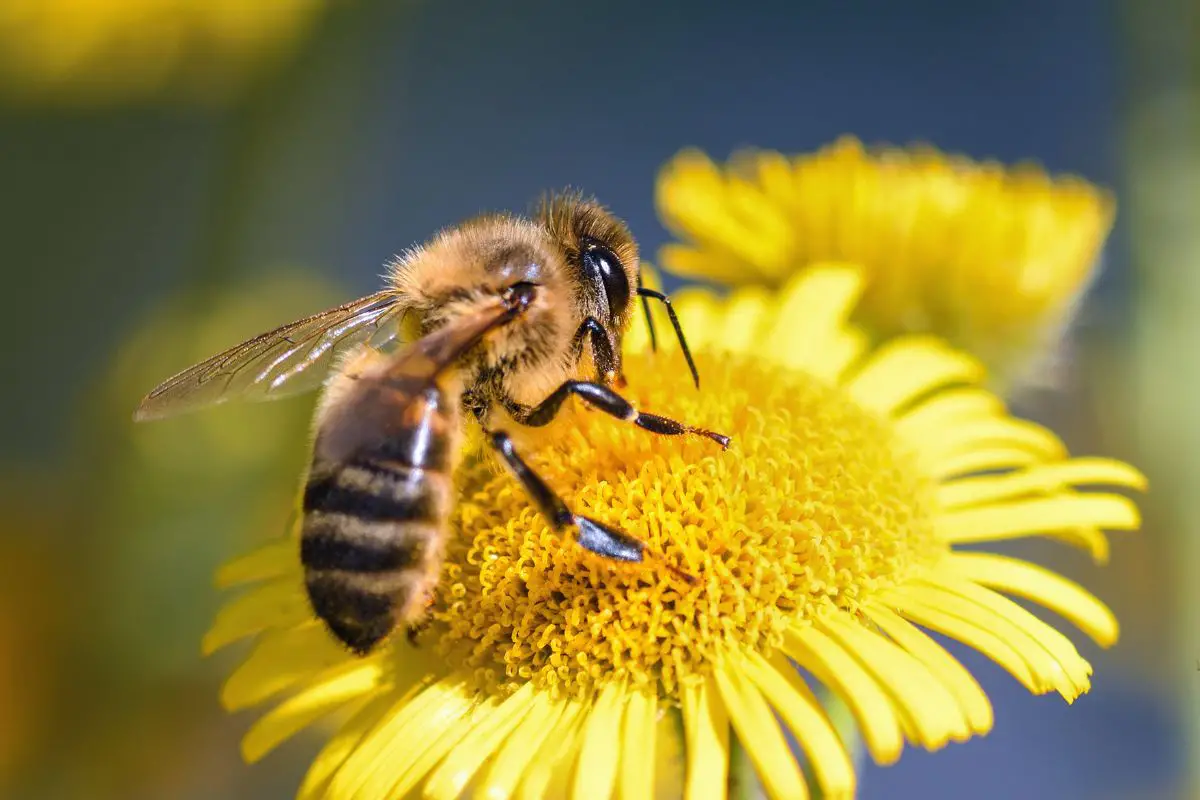
One of the most common signs of spring and warm weather is the presence of bees buzzing around your property. Honey bees, carpenter bees, and any other type of bee will be out pollinating crops, ornamental plants, and most types of vegetation. These bees often mind their own business out in the wild, but if they are disturbed, they will attack.
Bees tend to sting, so that can be a bit painful. They can trigger allergic reactions to some when they are stung. Bees are also known for creating honey and seemingly mind their own business in their environment.
These bees are essential to the environment, but they also have some closely related insects that are either in the same family as the bee or take the impression of a bee. Many of them will also attack and can be pretty painful. This list of insects also has some differences so that you can tell the difference if you come across them while working outdoors.
1. Wasp
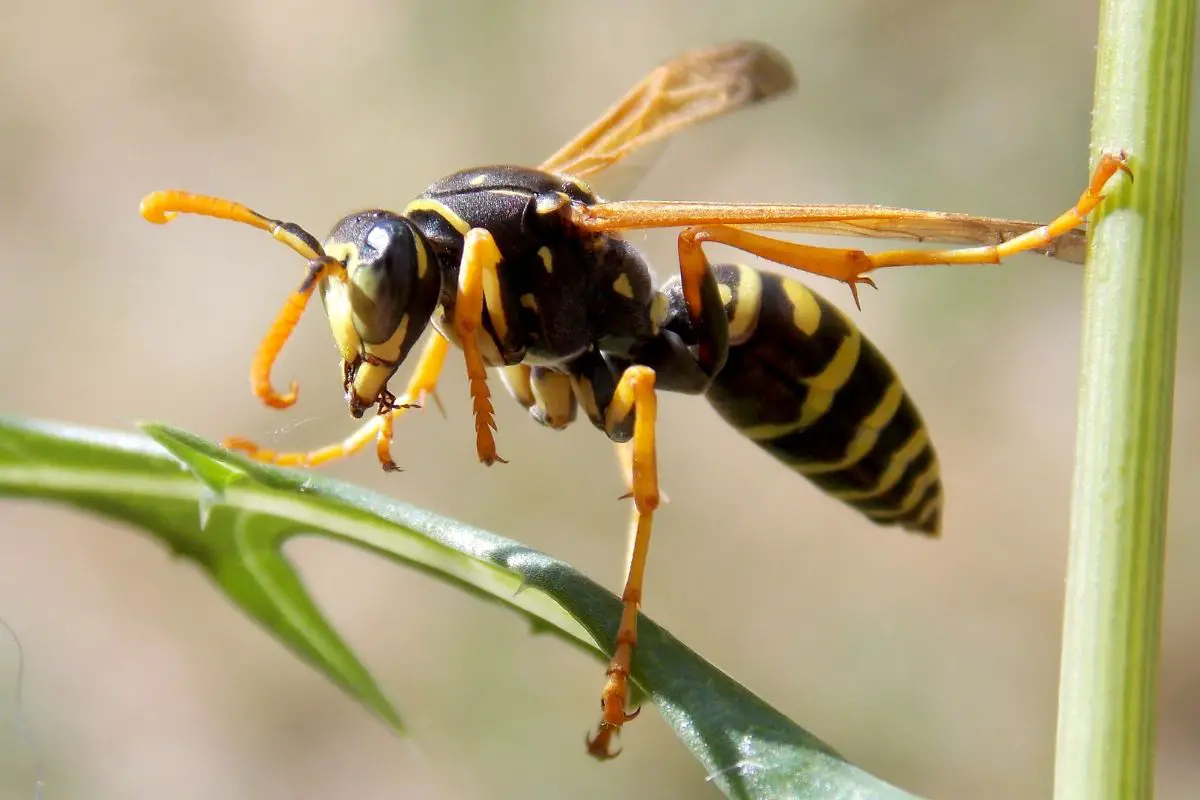
When you think of a bee, you probably think of its angrier cousin, the wasp. A common wasp will have black and yellow markings similar to a bee and a buzzing sound. As they get closer, you may notice that the fuzzy hairs found on a bee are lacking.
They live in colonies like bees, but their nests are paper-like and found in hollows. They tend to nest a lot higher than bees due to their need to feed on insects and their larvae. In some cases, the wasp will attack bees and their hives to steal their honey, which is a different characteristic from the bee.
2. Asian Horntail
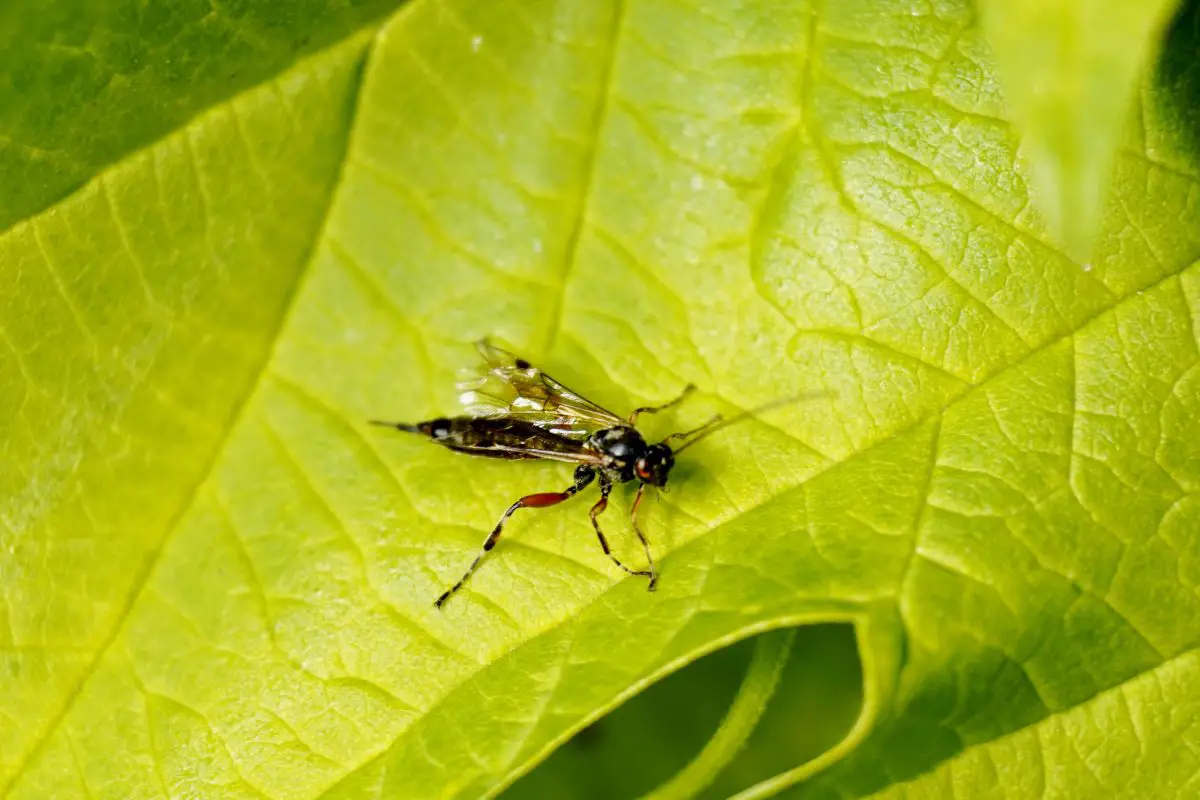
The Asian horntail is a type of wasp that is easily mistaken for a bee with a similar color and hairy texture to the bee. Their body types are longer than a bee and have an orange color when looked at up close. There are body differences between the male and female horntails.
Unlike bees, they spend their time in wood, nesting in rotting wood and feeding on the wood. In most cases, they are not violent or aggressive towards humans like bees.
3. Bee Robber Moth
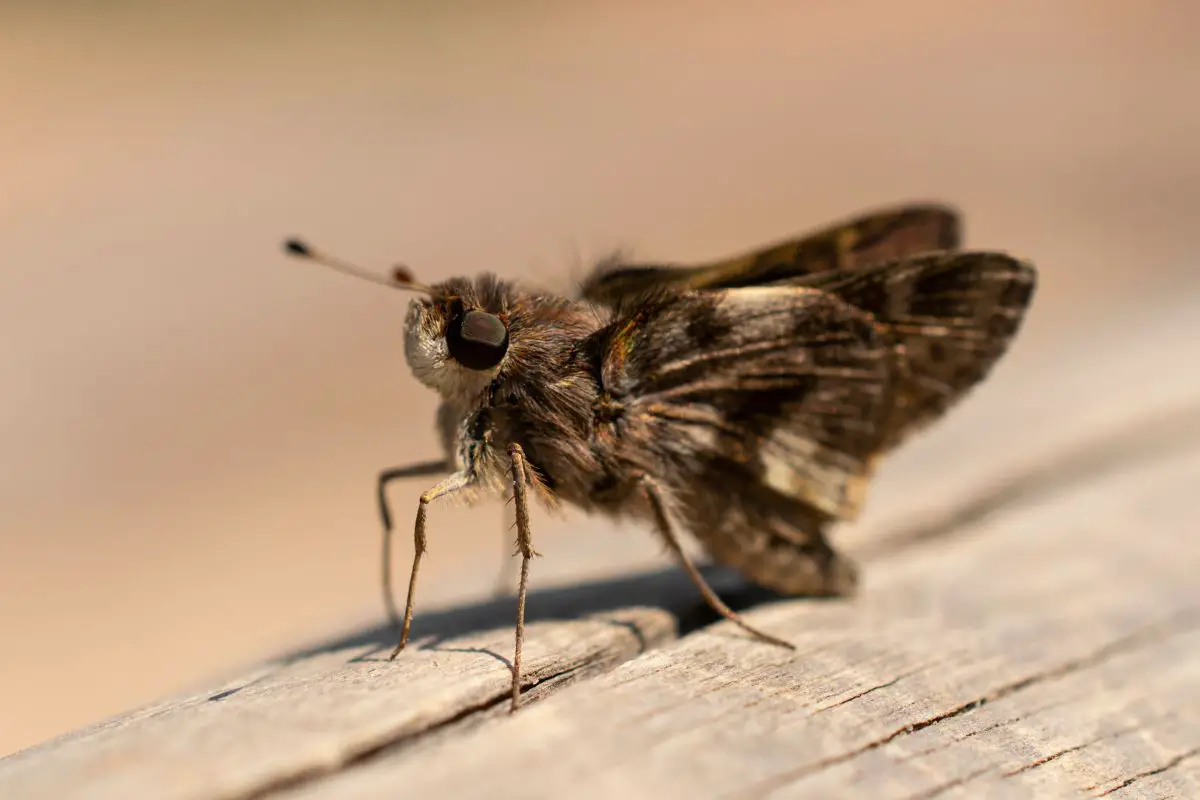
While it carries the same color pattern, the bee robber moth is not a bee. It is a moth that has taken on the features of a bee to protect itself from predators afraid of the bee sting. These moths are harmless like other moths.
They do, however, like to eat the honey produced by bees. This color and the scent they make give them the ability to sneak into the hives undetected and feed on honey. They are not oversized moths, but they are about one to two inches long, more extensive than the bee.
4. European Hornet
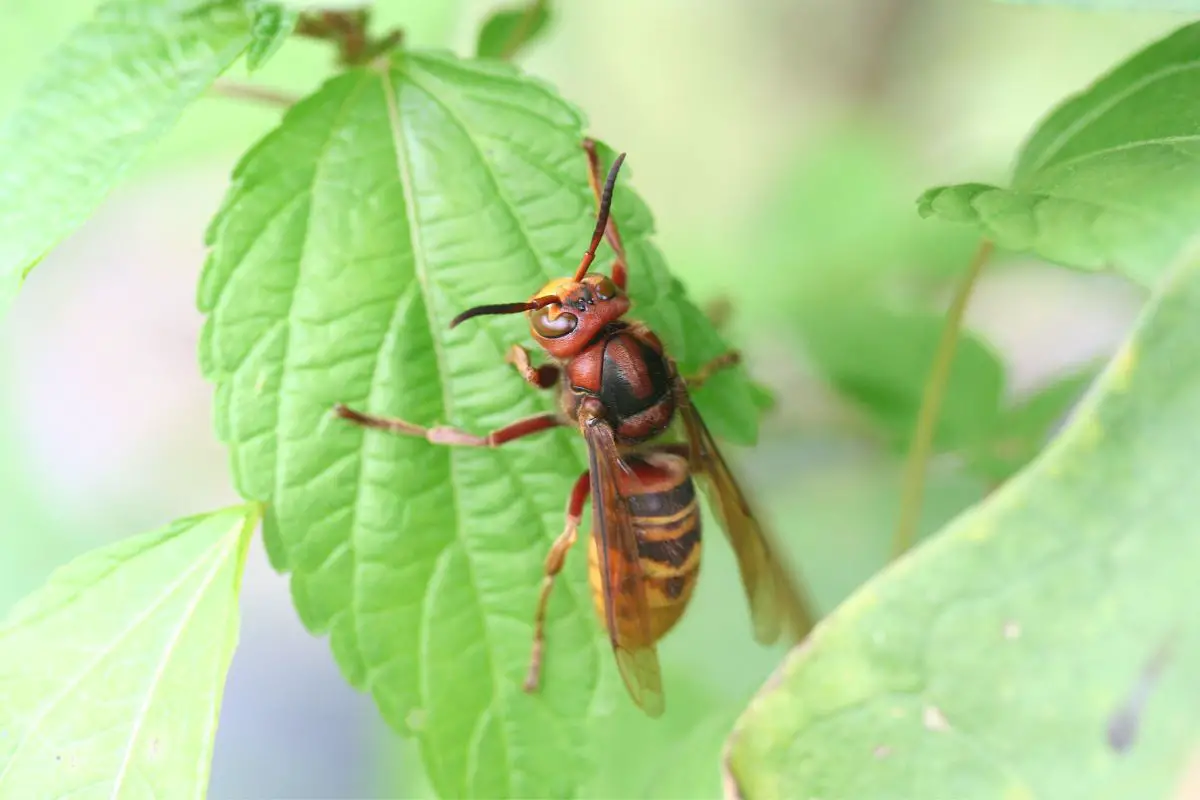
Angry and aggressive, the European hornet is in the Vespidae family with yellow jackets and paper wasps. The male hornets are approximately an inch long, while the queens are more than an inch and a half. They have a head that is both red and yellow and large eyes that are bigger than most of the other wasps.
When they nest, they do not make hives like bees. Instead, they have a paper nest that is secluded in a tree or a space on a vacant and quiet structure. They like to be in the wild where other insects are around for food.
They will kill insects like cicadas and also yellow jackets that are similar in size. Bees are also on the prey list if there are limited options.
5. Yellow Jacket
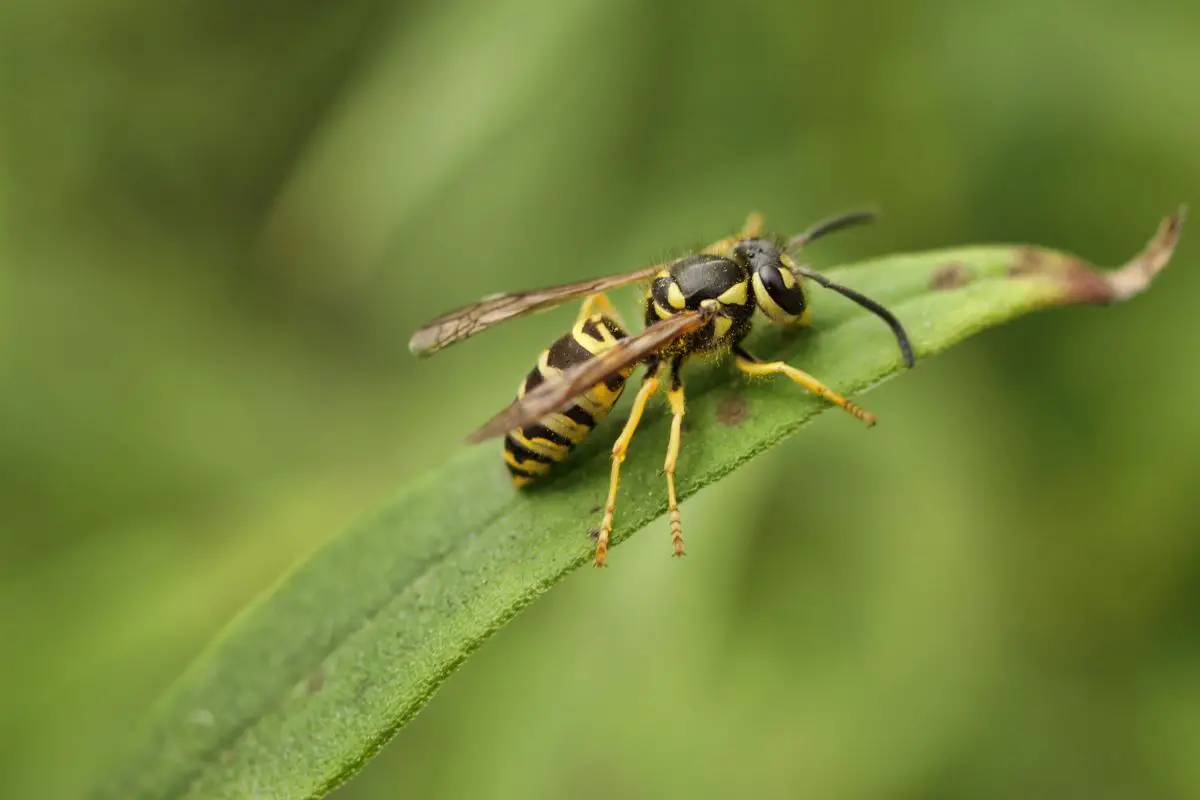
The yellow jacket is another type of wasp that looks the closest to the bee in color and size. They are not long but relatively short and stocky like bees. However, they do not have the fur or hair on their bodies that the bee has.
A yellow jacket will also pollinate any vegetation that it is around. They do eat smaller prey like grub worms, small beetles, and garbage that has been left unattended. The life of a yellow jacket is usually over in a couple of months, which is similar to a bee’s lifespan.
6. Four-Spotted Velvet Ant
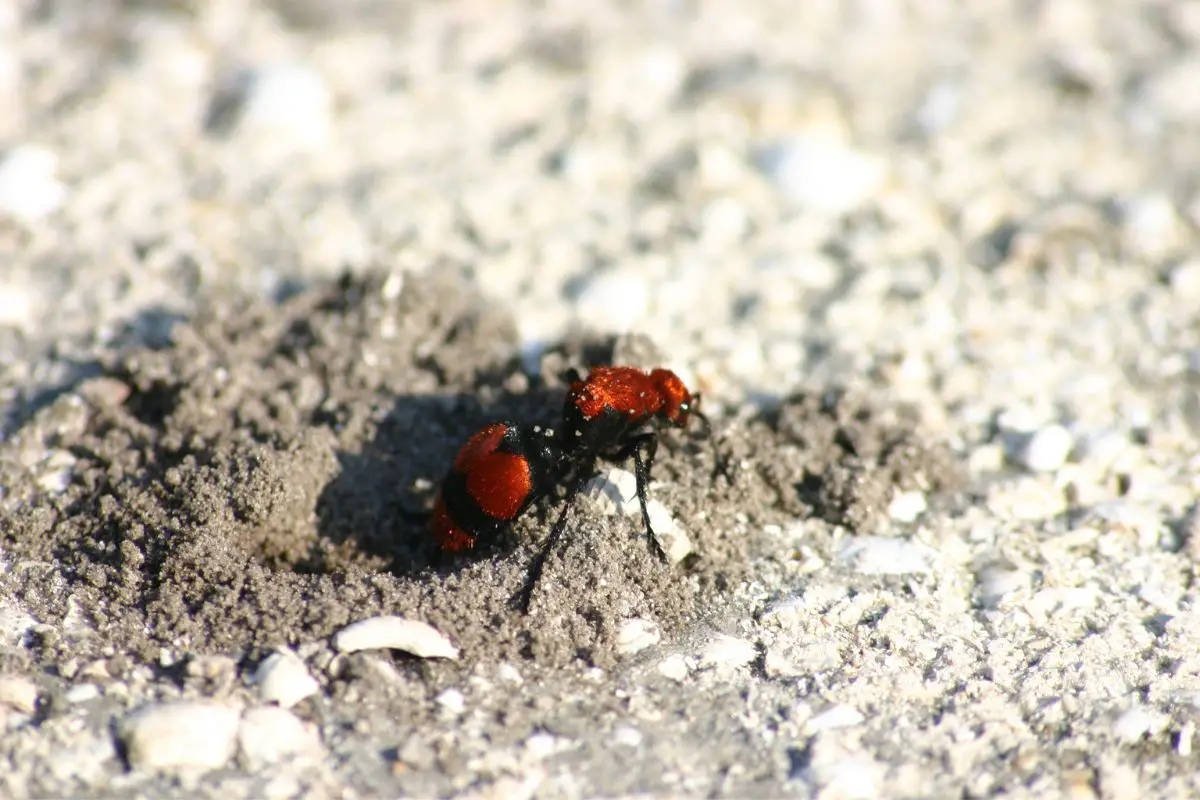
While you expect to see an ant crawling, you are probably not expecting a bee-like sting to come from that and when it bites down on you. That is because the four-spotted velvet ant isn’t an ant at all. It is related to the bee and the wasp.
It just walks instead of flies if it is the queen. They can take on the yellow and black patterns of a bee. Some are also red and have an orange tint for a more authentic look when you pick them up. They are attracted to nectar, seeking it out and competing with bees.
7. Broad-Bordered Bee Hawk-moth
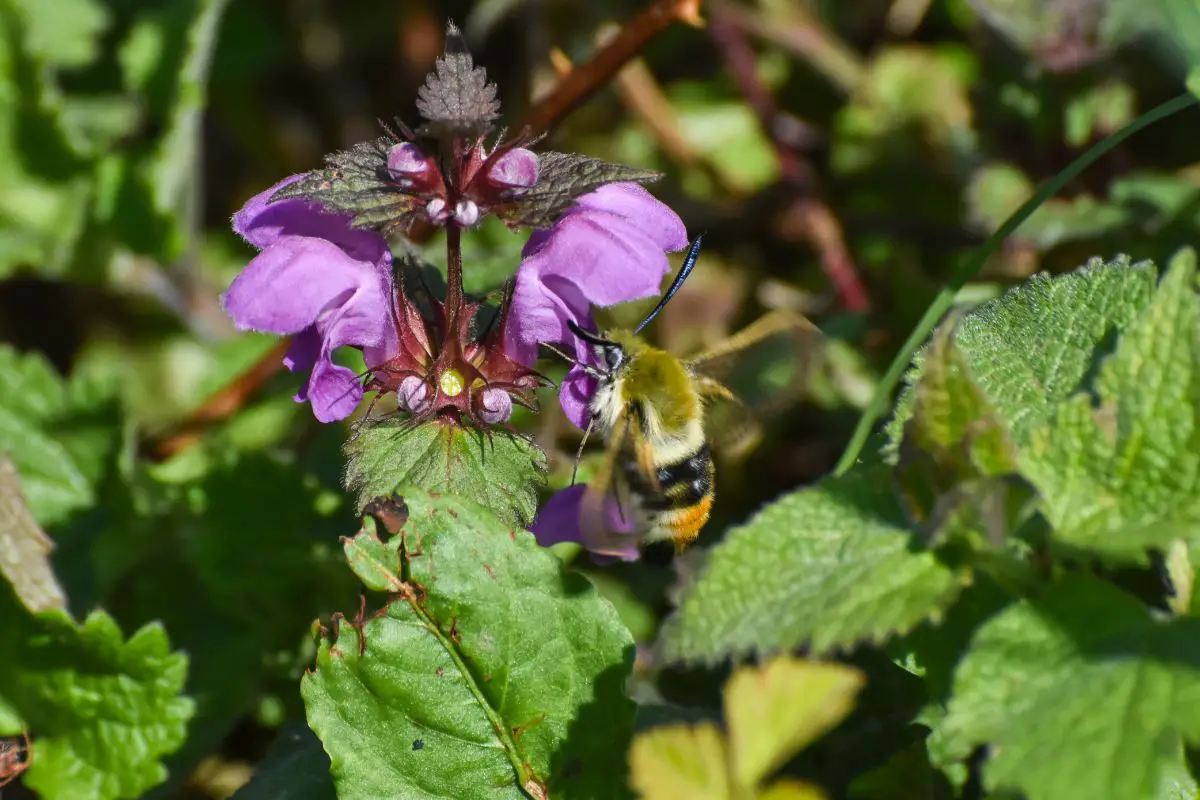
The broad-bordered bee hawk-moth is more prominent, resembling bumble bees, almost doubling in size. When you see these hawk-moths, you will probably find them dining on nectar and honeysuckle. There have been cases where they were found in bee hives eating on the honey-like other moths.
While bees are out in early spring, these hawk moths get a later start, appearing around the end of May or the first of June.
8. Horsefly
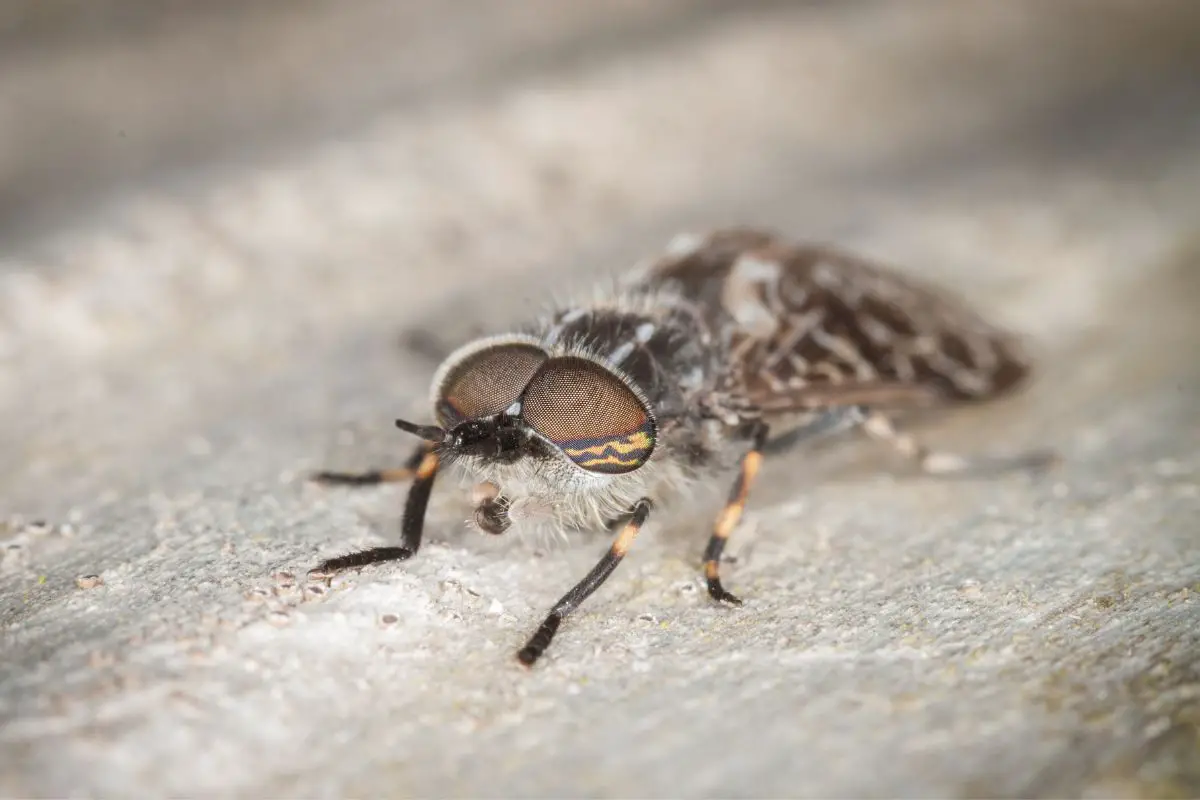
Taking on a similar color pattern to the bee, the horsefly will make you think you were stung by a bee when they bite. They do not have stingers, but the female will bite any mammal she comes across, including humans, to extract blood. This is unlike the bee, who has no interest in blood.
What they do have in common, however, is their flight agility, their size of being up to an inch long, and their love for nectar. However, they are not in the bee family as they are flies and one of the largest out there.
9. Bee Fly
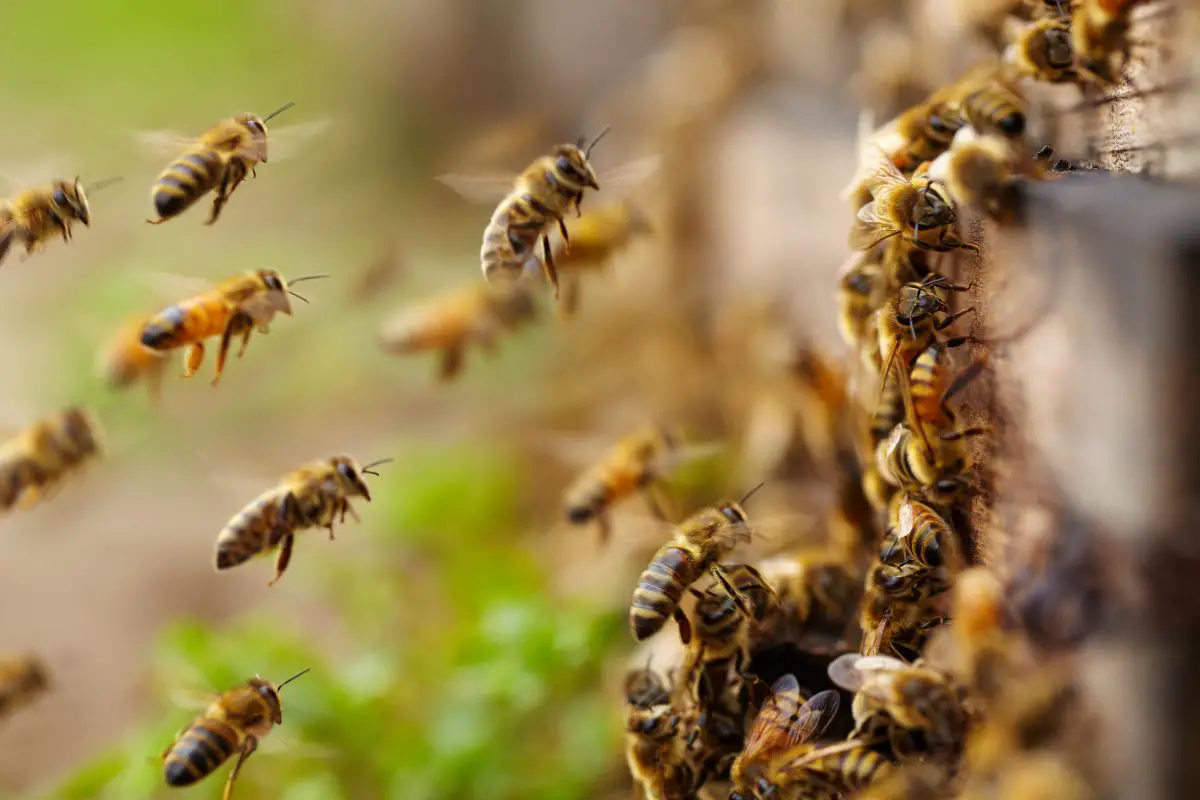
There is a fly that is a pollinator and still resembles the bee. This fly is the bee fly. Appropriately named, it mimics the bee down to the furriness on its body.
If you are in its vicinity, you will hear it buzz like bees. One big difference is the number of wings. Where bees have four, the bee fly has two. They also have much larger eyes that are common for flies and slim legs.
One downside of this bee fly is their need to take advantage of the bees in the area. When the mother bee is building her nest, the bee fly will wait for her to leave and then drop one of its eggs in the nest. Once it hatches, it will feed on any nectar or pollen stored by that bee and the bee larvae in the nest if it hatches first.
10. Yellow-Jacket Mimic Moth
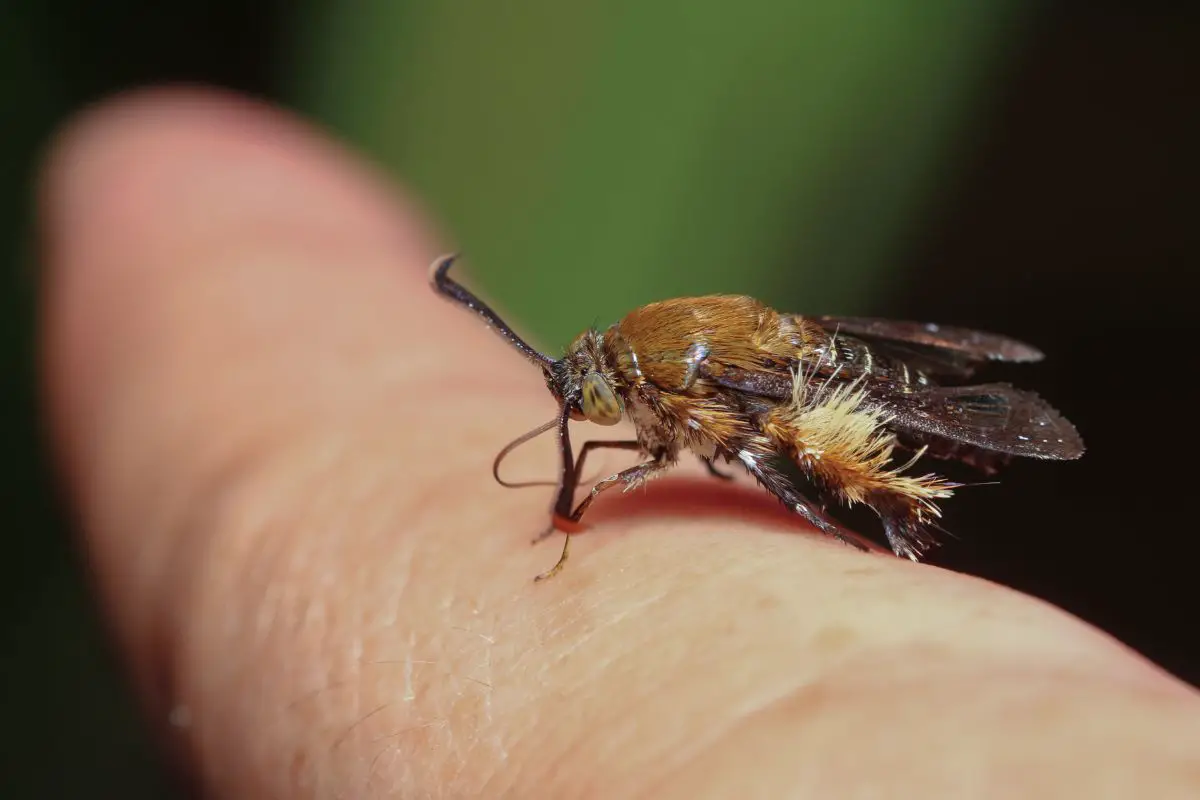
Even from a short distance away, it would be difficult to see the difference between a yellow jacket and a yellow-jacket mimic moth. In terms of size, they are about an inch and a half long, but once the mimic moth spreads its wings, you will see the broad texture common for moths. Unlike bees, they do not sting or have any interest in attacking.
This moth is taking advantage of bee-like properties and yellow-jacket properties to ensure its safety from predators who may be lurking. These moths do not consume food as adults, but during their larvae stage, they are fed on damp wood and shaded with vegetation nearby.
11. Cicada Killers
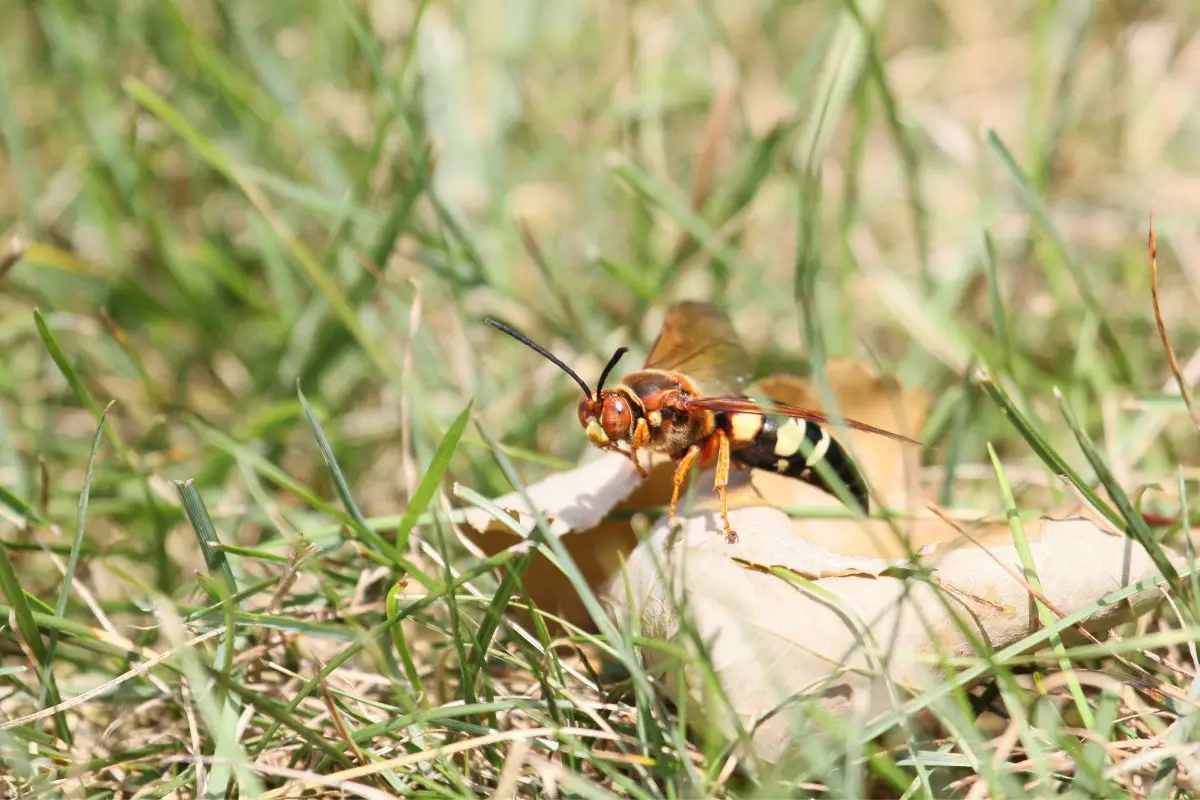
Unlike bees, the cicada killer wasps are not social and burrow individually. There is a large nest where they all live, but they are spread out to have their own space. Like bees, they have black and yellow markings and spend time flying with that signature buzzing sound.
However, they are twice as long as bees, most being two inches long and slender like other wasps and yellow jackets. Their primary food source is cicadas, where they build their nest. The males in these colonies live approximately two weeks while the females double that at four weeks.
12. Hoverflies
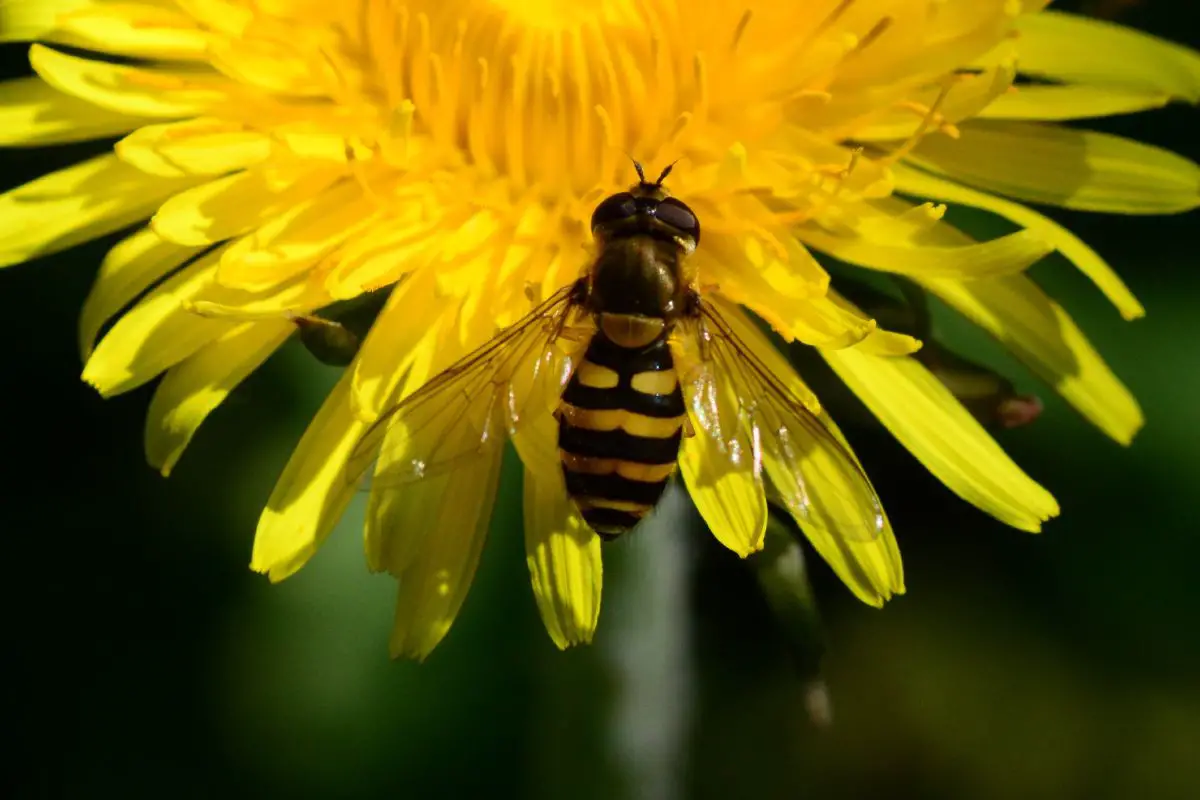
Like bees, the hoverfly will pollinate flowers as they enjoy the nectar. They have similar markings to bees, but a closer look will show big eyes, which bees do not share. They take on the colors for disguising purposes and are often left alone by predators because they relate them to bees.
While adult hoverflies are attracted to sugar and nectar, the larvae prey on smaller insects like aphids until they reach maturity. They are beneficial, like bees, because of their pollination, and they can happily coexist in the same environment. Hoverflies live around 28 to 32 days on average.
13. Bee Beetle
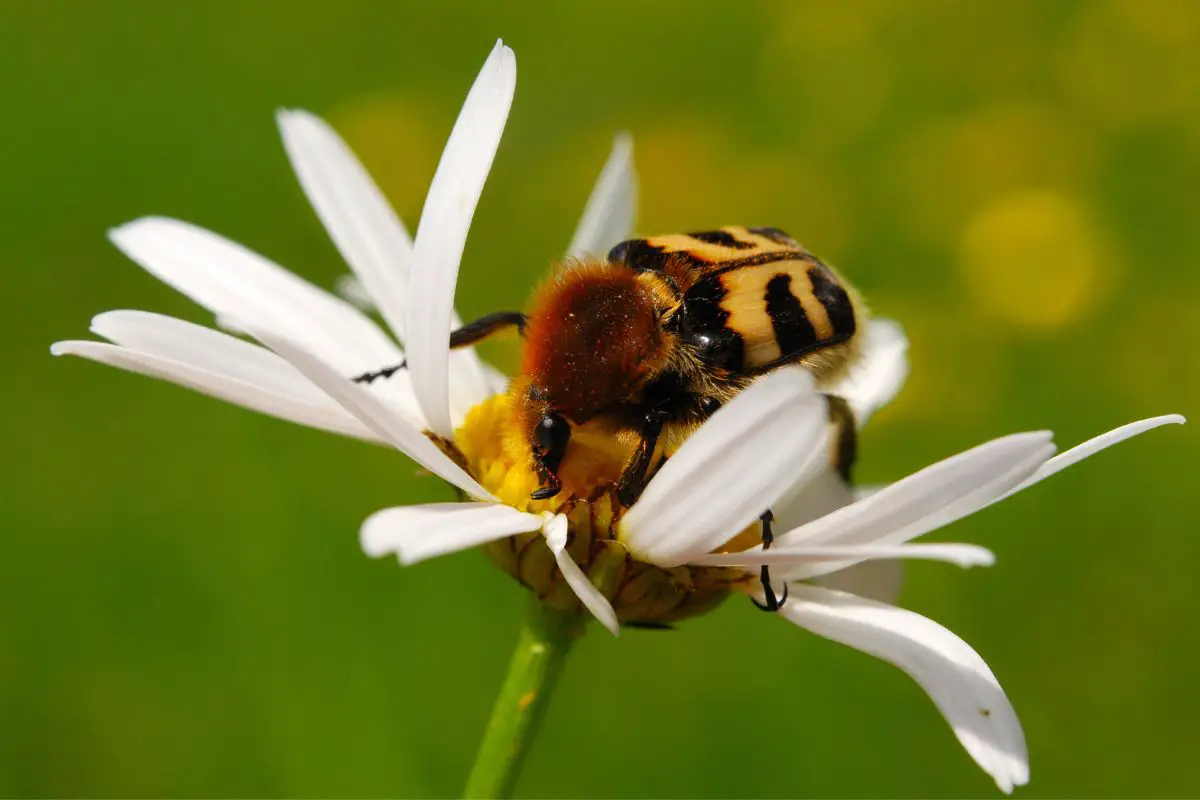
Taking on similar markings to the bee, the bee beetle is no friend to the bee. They are not identical in class or type of insect. They are smaller than the bee, usually around a half inch long and stocky like a bee.
They sneak into bee hives and are disguised with similar colors. They eat the honey and any pollen that is stored in the hive. This can deplete a hive and starve them out.
Once they invade, they will take over the hive, leaving it drained and empty once they have consumed everything. In some cases, they will eat solitary bees, attempting to pollinate flowers where the bee beetle is hiding. They can live approximately six months, which is similar to some of the working bees.
14. Oblique Streaktail
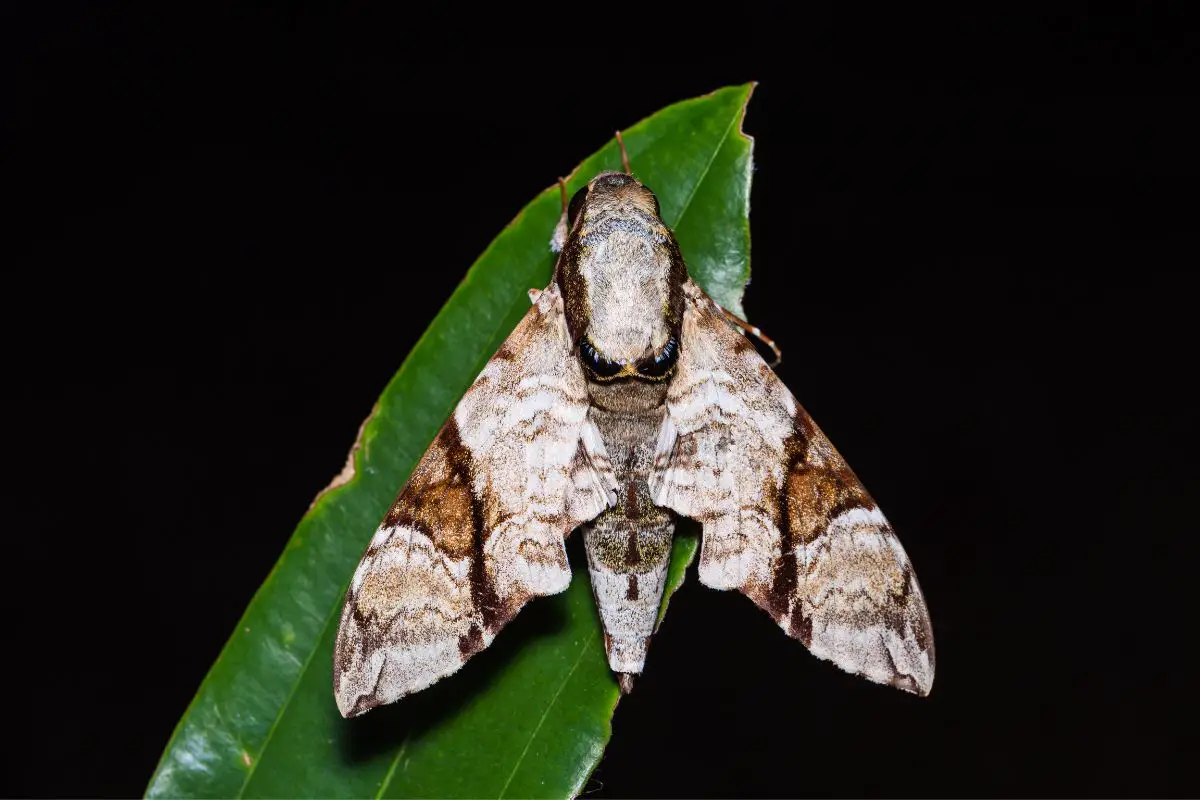
Another type of fly, the oblique streaktail, can have a pattern that mimics both bees and wasps. Predators confuse them with bees because of the steady buzzing they make to throw off their predators. Like bees, they enjoy sweet and sugary liquids.
They pollinate and compete for nectar with bees in their area. They are found throughout North America in the spring and summer months. In most cases, these streaktails only live about 5 to six months.
15. Drone Flies
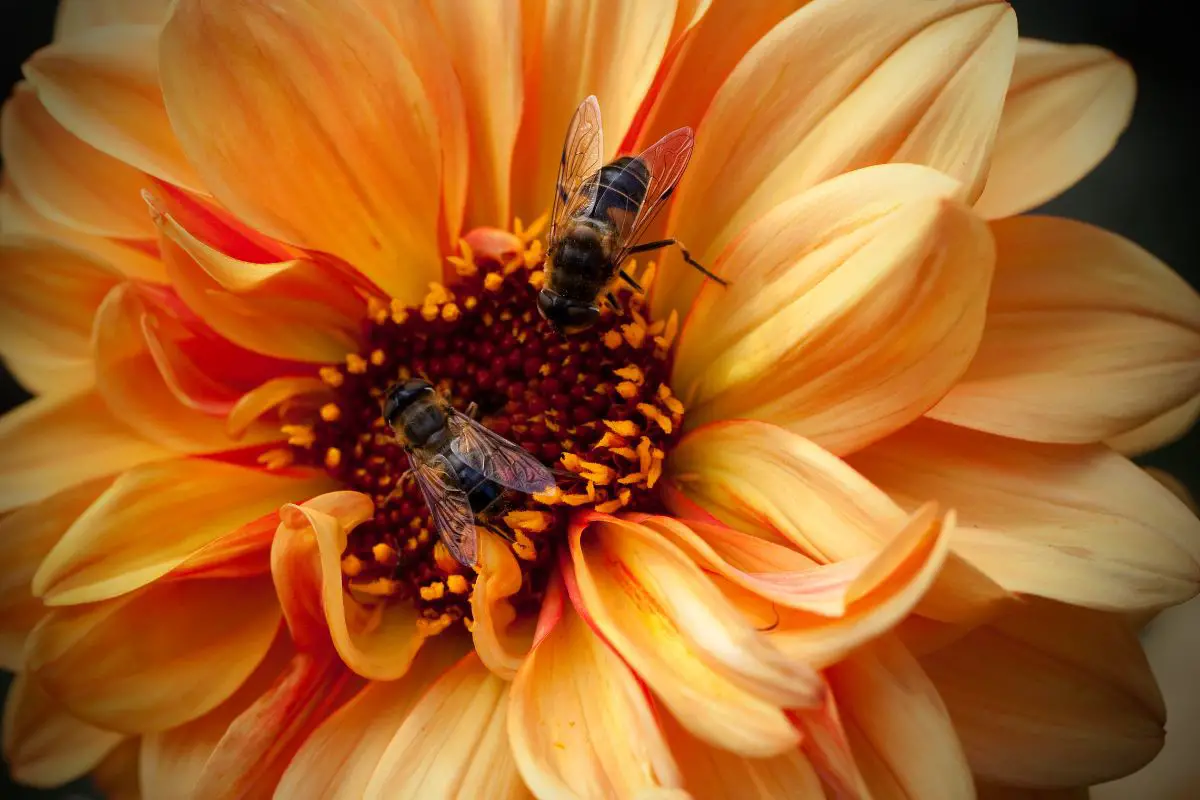
Another fly that has successfully mimicked the bee is the drone fly. They are located in the western part of North America and have everything from color patterns to sizes similar to the bee. Because birds and lizards choose not to eat bees, the drone flies can stay safe from predators.
They cannot sting. However, they only have mouths designed to capture nectar and are in direct competition with bees where they stay. Like a bee, they are beneficial to the environment as they offer excellent pollination for crops in these areas.
The lifespan of a drone fly is several years if it can stay disguised from predators.
16. European Paper Wasp
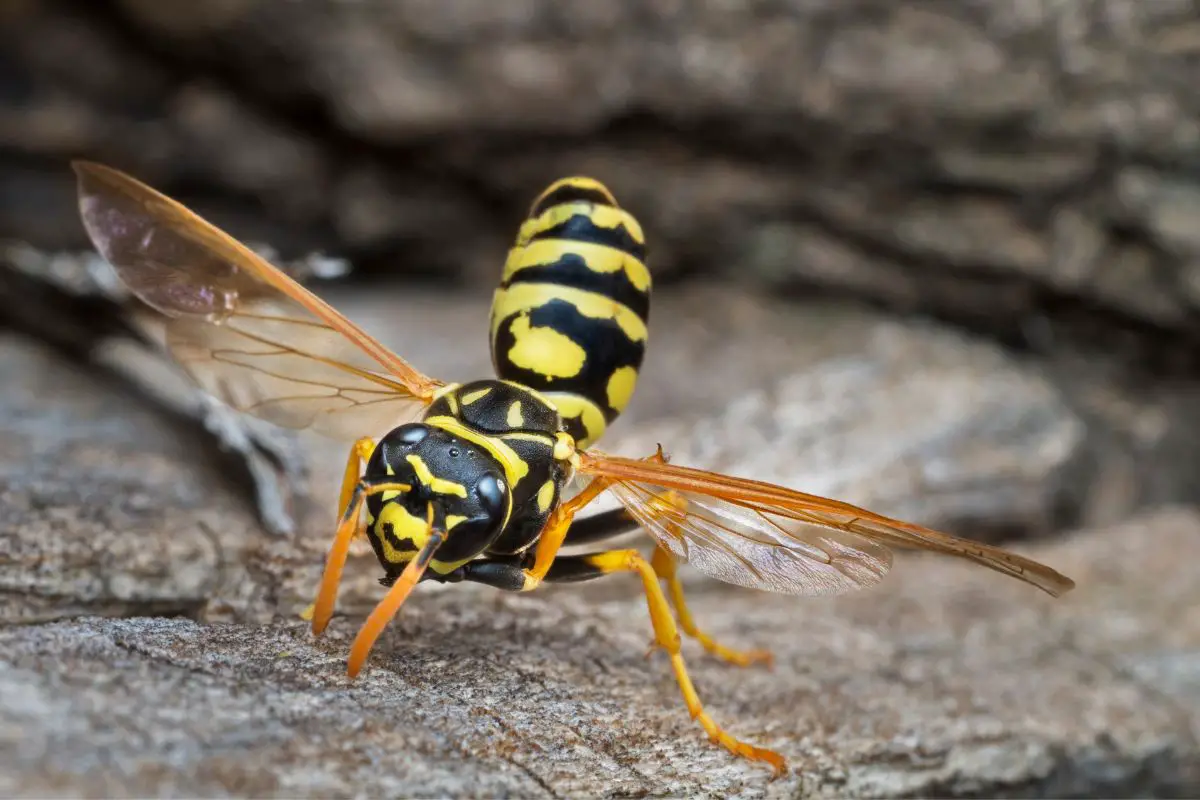
The European paper wasp is among the more common wasps in Europe and North America. It is related to the bee but becoming more of an invasive species than helpful to the environment. They colonize together like their bee cousins but choose structures and metal over natural elements.
They are longer than the bee by a half inch, and the queen averages two inches long. They are slender and more aggressive than bees. While the queen can live through at least three winters, most European paper wasps live approximately ten months in the colony.
17. Asian Hornet
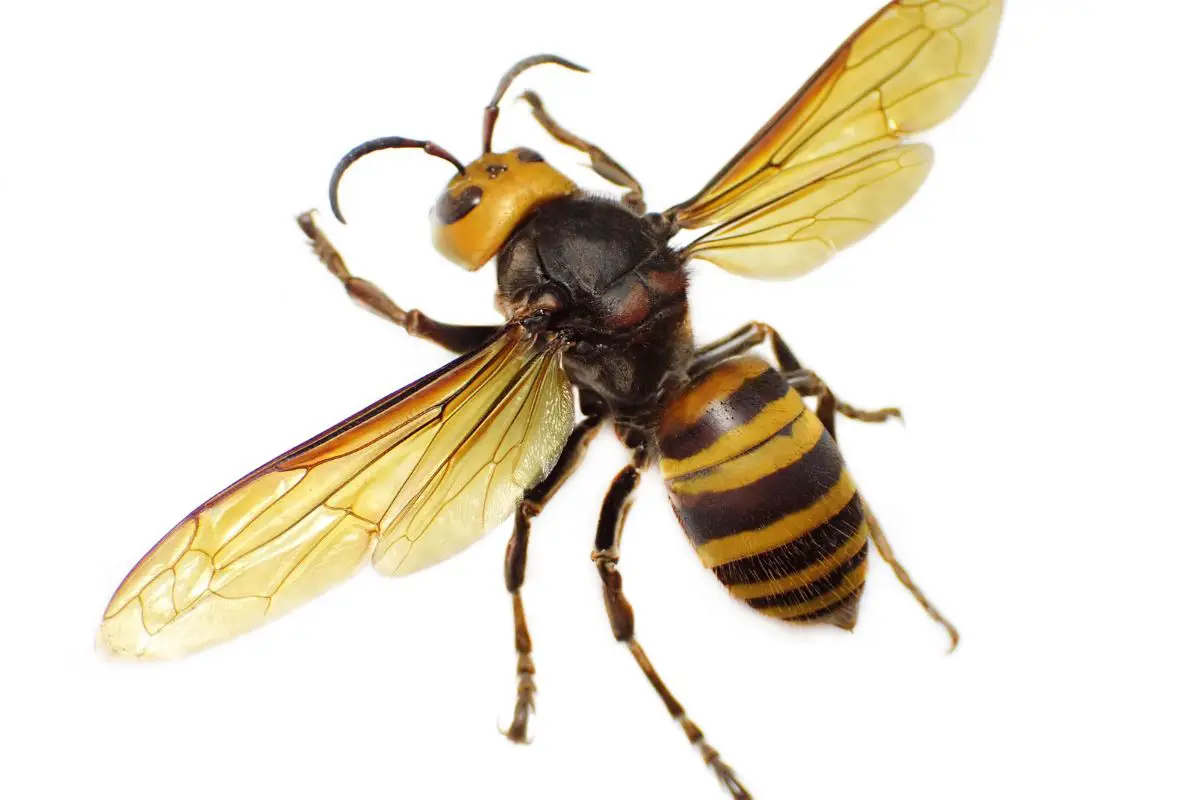
The Asian hornet has a similar bee pattern on its abdomen, but instead of a yellow, they are more orange and black. They are also slender compared to the bee but have small eyes. They are known to be aggressive and take out bees to compete for nectar.
While they originated in Asia, they have a significant presence in North and South America as an invasive species. They also compete with native wasps and hornets in these areas. The Asian hornet can live up to five months, with its queen living closer to nine.
18. Wasp Moth
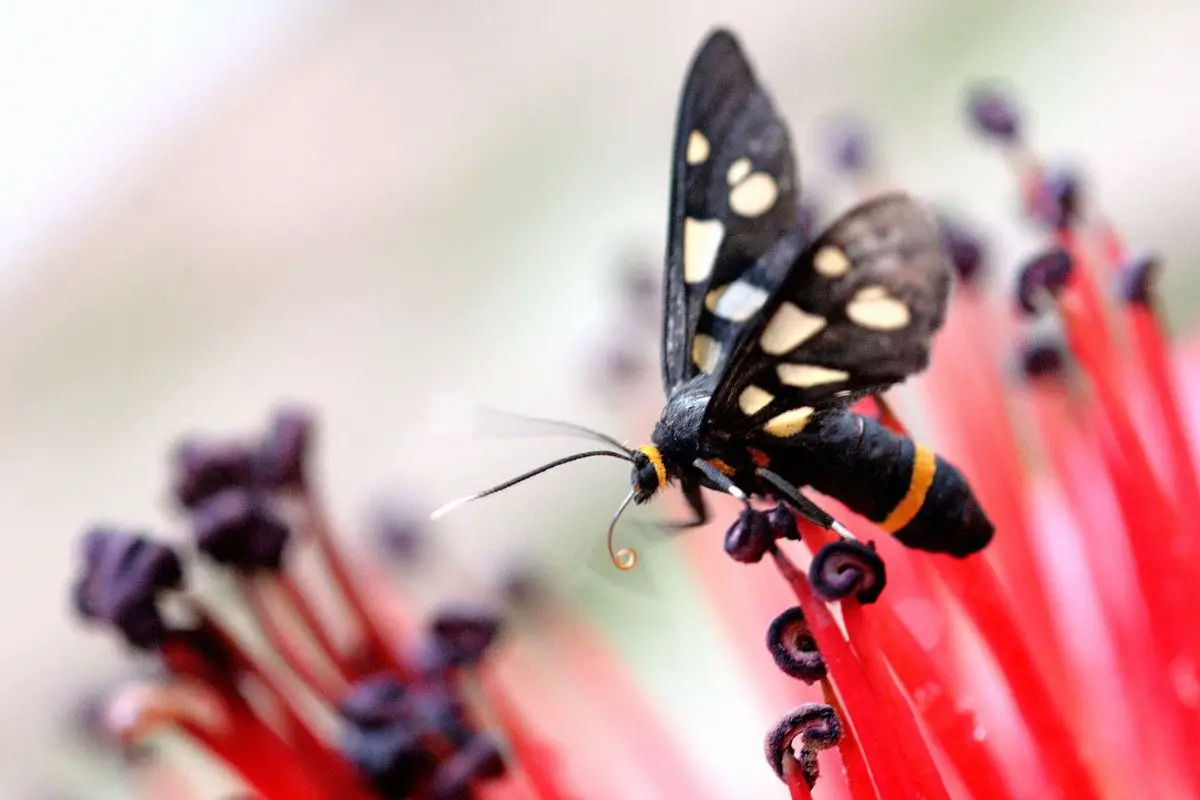
The wasp moth has all of the appearances of aggression but without the actual ability to sting like bees. When larger predators attack wasps, they are stung repeatedly, and the meal is not worth it. The wasp moth is safe and can continue thriving by carrying this pattern.
Like bees, they also enjoy nectar and other sweet natural treats. They assist with pollination, going from flower to flower. Most of these moths only live up to 20 days, while the queen lives for a year.
FAQs About Bees And Similar Insects
Does the six-week to two-year lifespan apply to all types of bees?
Like carpenter bees and worker bees, bees with intense labor for their hives usually experience shorter lifespans. This is because of the constant intensity they experience. This is also why the worker bees are the first to get aggressive because they do not like distractions.
Do Bees Attack Moths When Trying To Pollinate?
When the bees and the mimic moths or even flies are in the environment, many flies to the next available flower and continue pollinating. There isn’t much aggression in the competition in nature, where hundreds and thousands of flowers can choose from.
Do Bees Eat Other Insects?
Unlike many of the insects on this list, bees have a strict diet of nectar and honey, so they do not eat other insects. They only attack when they feel threatened and have moth or beetle intruders in the hive.



